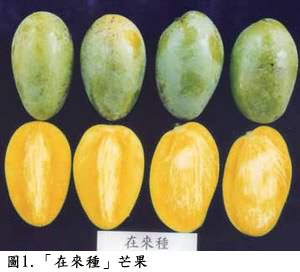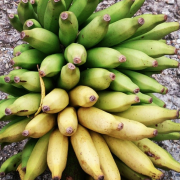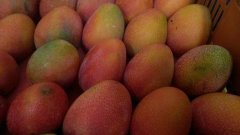Taiwan mango variety soil mango is also called to be planted, the taste and taste production time of soil mango variety
Before growing Ai Wen mango, fields or roadside clearings in southern Taiwan were often planted with soil mangoes, also known as mangoes. Despite its name, the native mango is an exotic species introduced from Java by the Dutch. It was first planted in Liujia Township in Tainan. Because of its suitable climate and easy growth, it gradually spread to all parts of Taiwan's South Island. Since the popularity of Ai Wen, very few people have planted mango, most of which are decades-old trees, but the life of mango can be as long as 100 years. At present, there are more than 6,000 hectares of mango orchards in Taiwan, most of which are located in Pingtung. In Tainan County, there are more improved mangoes, and native mangoes account for only more than 10%.
Native mango, also known as "coming to plant" or "clover", is smooth and sweet when it is ripe, with a strong mango aroma and a slightly refreshing sour taste, even if it is smaller than Aiwen, with larger seed particles and even a little more fiber. but the charming mango flavor is irreplaceable. People who like native mangoes are mostly concentrated in the central and southern parts of the country, while the northern markets do not particularly like this old variety with local flavor.
Because the fruit is small, the tree potential is difficult to dwarf, and the management is difficult, not only the area is getting smaller and smaller, but most fruit growers are also unwilling to take serious care of it. Farmers' associations in various villages and towns have also given up grading packaging and joint transportation and marketing of native mangoes. There is a kind of improved soil mango, the fruit is larger, but the fiber is thicker, called "soil reform" although the flavor is poor, but because of the large fruit shape, it has better market value.
The mango is produced earlier. In Pingtung, the early mango begins to appear in March. In Tainan, it is not until April at the earliest, but May and June are the peak periods. At this time, the flavor is the best. Later, you can still eat it in early July. In addition to the season, earthy mangoes should be round and short and fleshy, yellowed and evenly colored to be ripe enough, and there should be no signs of falls, bite marks of fruit flies and black spots caused by anthrax. Native mangoes, like Ai Wen, are also "red in the clusters". They can be harvested until fully ripe, but after two or three days of harvest, the flesh will be softer and ripe when the hands are a little soft, and the taste will be better at this time. In the past, it was not true that mangoes were ripe and delicious only when there were long black spots. In well-managed orchards, even when mangoes are ripe and juicy, they do not necessarily have anthrax black spots. The earthy mangoes, which have just been bought, can be fully ripe if they are left at room temperature for one to three days.

- Prev

Li Linjiao / bergamot banana is a rare banana variety in the market. How much is the taste price of bergamot banana?
Li Linjiao (Pisang Lilin), a rare banana variety in the market, is also known as canna, bergamot, Niujiao banana and tree banana; the pulp is whiter than the northern banana and has its own flavor, which is native to Nanyang. The rare bergamot banana is called bergamot because it is similar to Guanyin bergamot in appearance.
- Next

Is the price of Taiwan Ai Wen mango expensive when it is ripe? Avon, how big is a mango? is it only in Taiwan?
Aiwen is the most popular and best quality mango variety in Taiwan. There are 7,800 hectares of Ai Wen orchards in the country, with the largest number of species in Tainan County, as high as 4,200 hectares. Ai Wen, also known as American mango or apple mango, came from Florida in 1949.
Related
- A course of planting techniques and methods on how to grow carrots
- How to plant the latest tulips?
- Is it better to pick tea in the morning or in the afternoon? When is the best time for tea to be picked? what is the third or fifth tea?
- Launch Yuanxiao Happy combination Haocha + Tea Yuan healthy Taste
- Penghu Tourism "Fireworks 20 Parade with You"
- 2022 West Lake Happiness holds "Digital Revitalization Voucher" and draws iphone13 and laptop.
- Banqiao Fuzhou social houses are designed to change start-up combined with police elimination to create a safe and livable environment
- The convenient measure of "mechanical weeding" in Xinbei has been abused and the Agriculture Bureau has imposed heavy penalties on the illegal land consolidation.
- Changgeng University Joins Hands with Four Memory Factories to Rescue Memory Talent Shortage
- The list of Taiwan's top 100 MVP managers is listed by the Director-General of the Farmers' Association of Sanxia District.

